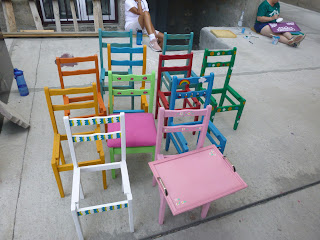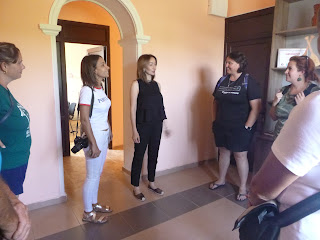The plan is to sell the tea trays for 1000-1500 ($2-3 USD) dram a piece to help raise money for Habitat Armenia's projects. To follow along with Habitat Armenia, click here.
We then headed over to Warm Hearth, which is the first group home in Armenia for people with special needs that have aged out of the orphanages. They opened in 2006 and currently house 14 people at this location with a second location with 8 more people. We were shown their house that includes administrative offices, therapy rooms and places were they can hand make rugs and pottery projects.
This specific group of people have been together most of their lives, having been from the same orphanage. It is great that they are able to stay together and remain a family unit. To learn more about Warm Hearth, please visit their website here.














































